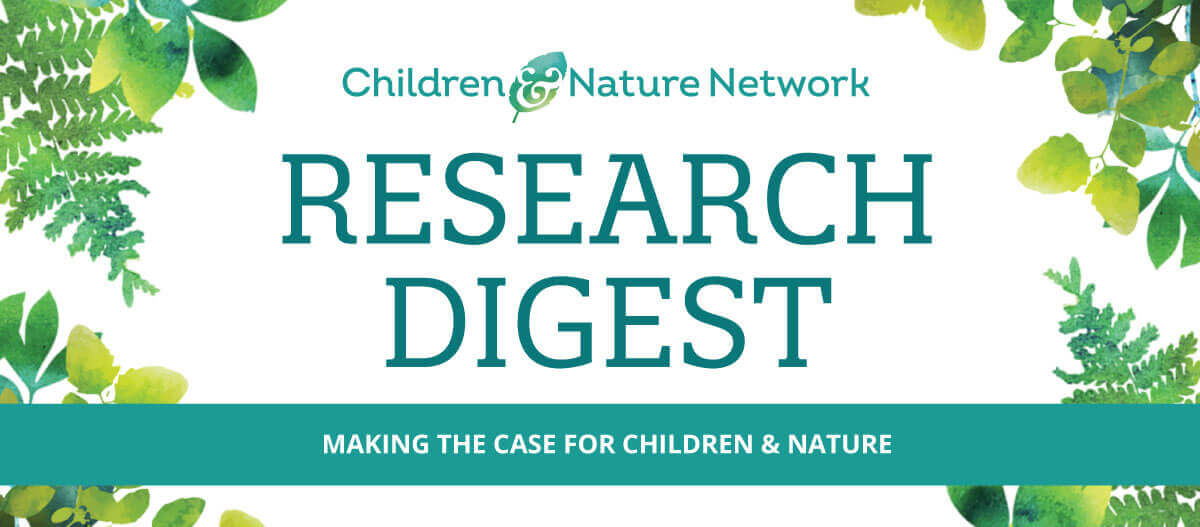WHY INVOLVE YOUTH IN NATURE-BASED INITIATIVES
The “why,” or rationale, of involving children and youth in nature-based initiatives includes concerns about social justice and their right to be involved. The “why” also includes the benefits gained by involving youth. Such benefits apply to programs, children and youth, the environment, and the larger community.
Participatory design in schoolyard revitalization is linked to student knowledge, perceived efficacy and design outcomes
Teenagers involved with a participatory landscape design project at their schools in Detroit, Michigan worked in groups to create models of an optimal school yard. Their involvement with the project continued throughout the implementation phase at each of the schools. Post-implementation survey results indicated that the participating youth felt empowered and enthusiastic about making tangible physical improvements to the landscape in their low-income neighborhoods.
Bartlett, 2014. Participatory landscape design Detroit: A tool for environmental education and action.
Access Study
Children’s participation in public space planning increases the likelihood of children feeling safe in those spaces during socio-natural disaster
Three case studies explored children’s perception of how public space in Valparaíso, Chile might be used when socio-natural disasters occur. Data collected through focus groups, participatory mapping, and scale model activities showed that, for public spaces to be seen as protective in case of natural disaster, the spaces must be familiar to and appreciated by children. Designing spaces with children’s input results in greater use, and therefore familiarity and appreciation of, public green spaces.
Caro, Canales & Guéguen, 2022. Public space and urban resilience: Children’s perspectives. The case of the hills of Valparaíso, Chile.
Access Study
Nature-related and culturally-relevant art activities support young people’s active participation in their urban communities
This study focused on three participatory urban projects in the U.S. designed to promote a sense of inclusion, connection and belonging through nature and the arts. Artistic methods used to accomplish these goals included nicho boxes, photovoice and garden art. Feedback from the participating children and youth indicated that they felt their voices were heard, that their input mattered and that they had contributed to their community.
Derr, 2017. Participation as a supportive framework for cultural inclusion and environmental justice.
Access Study
Engaging young people in open space planning produces meaningful outcomes
This report describes how the Open Space and Mountain Parks (OSMP) department in Boulder, Colorado engaged 95 young people (age 4-17) in identifying strategies for enhanced visitor experience to specific open space areas. The young people’s perspectives led to concrete changes to the city’s original plan and prompted organizational shifts within OSMP to allow for greater youth participation in future planning initiatives.
Derr, Ruppi & Wagner, 2016. Honoring voices, inspiring futures: Young people’s engagement in open space planning.
Access Study
Participatory planning can make positive impacts on young people while contributing valuable ideas to the planning processes
This case study exemplifies how participatory planning allowed 52 children and 16 youth to be actively involved in addressing the future of density within Boulder, Colorado. Feedback from participating students indicated that they valued the increased opportunities for dialogue and collaboration. Students demonstrated more positive attitudes toward the government and increased understanding of diverse needs within a city. The city gained new and meaningful ideas for planning processes.
Derr & Kovács, 2017. How participatory processes impact children and contribute to planning: A case study of neighborhood design from Boulder, Colorado, USA.
Access Study
Children’s engagement in social campaigning can promote life-long social activism
This paper describes how a group of children (age 5-15) solicited adult cooperation in their campaign to save a natural playspace in London from being converted to a housing development. Fifty years later, interviews with three of the individuals involved in the campaign as children indicated that the experience promoted an enduring sense of agency and continued engagement in social activism.
Keating, 2017. Saving Tammoland: A microhistory of children’s action to save a wasteground playground, 1965-1968.
Access Study





